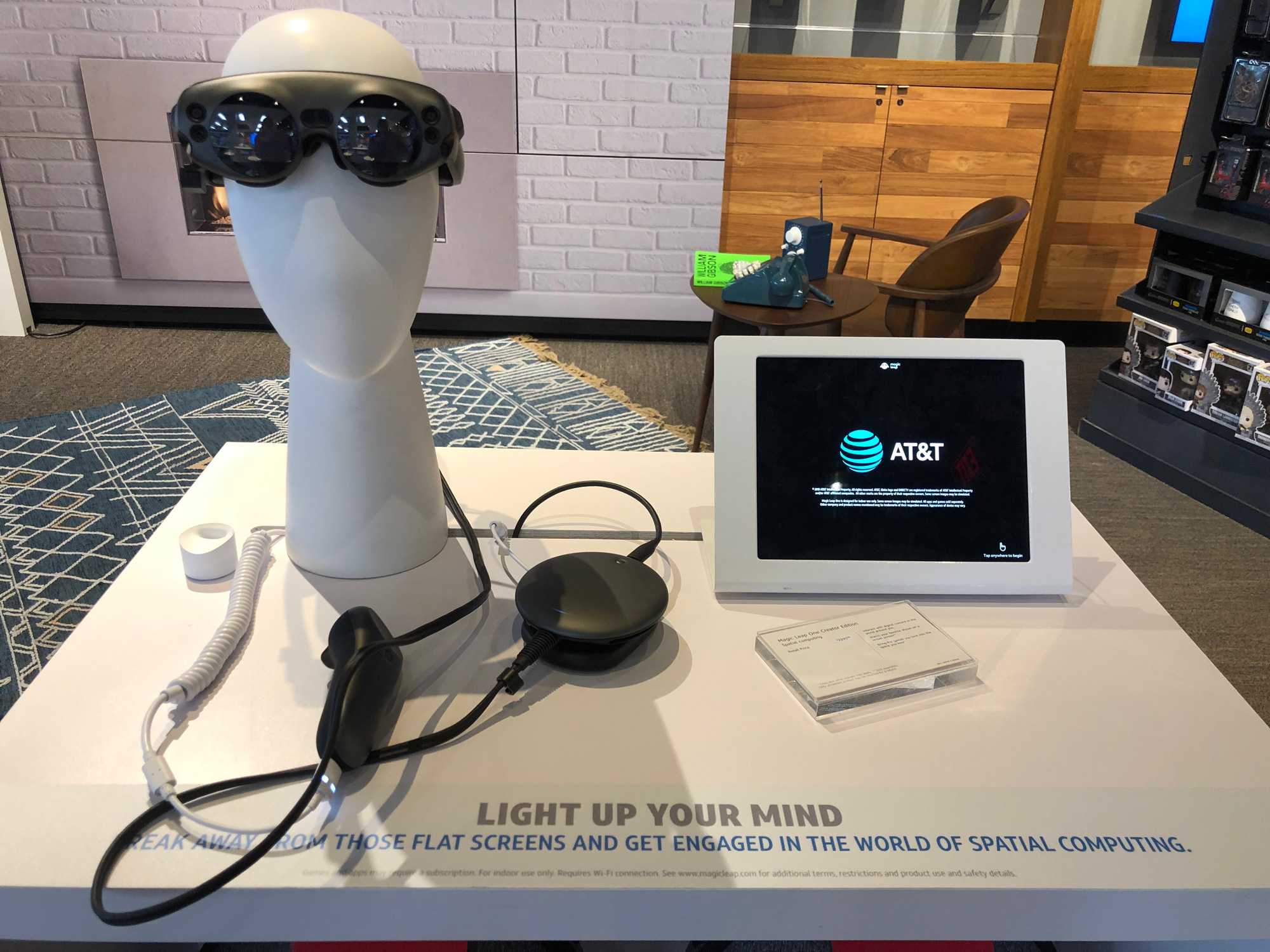I’ve done my fair share of virtual reality at this point and while that sector is undoubtedly flourishing, there’s something else brewing in the immersive digital content realm that is absolutely brimming with potential – augmented reality, and the company Magic Leap is making some major strides in that department. As highlighted on the Magic Leap website, the system’s “spatial computing dissolves the barriers between the digital content you love and the physical world around you.” How exactly did they develop this technology? With a record breaking amount of venture capital dollars. As of the end of April, Magic Leap accumulated $2.3 billion dollars, an astounding amount of money for a start-up tech company.
Now the question is, will all of that backing lead to a product that could justify its $2,300 price tag? I recently got the chance to participate in the Magic Leap Encounter at the AT&T store in Westwood, California, and while I can’t say I’ll be forking up that hefty sum anytime soon, the Magic Leap tech could certainly be a must-have in the future.
There’s a number of components at work in the Magic Leap One device that you should be aware of. First off, the whole thing is designed with human physiology in mind. The headset uses a superpower processor that combines real world and virtual light in a way that sends neural signals from the retina straight to the visual part of the brain ensuring that the user has a believable experience. Digital objects are contextually aware and the spatial audio is able to accurately convey distance and intensity. And a big bonus here is that all of this is packed into a “Lightpack” for on-the-go use.
At the Magic Leap Encounter, I got to give this hardware a test run with two games, Weta Workshop’s “Dr. Grordbort’s Invaders” and the Game of Thrones app, “The Dead Must Die: A Magic Leap Encounter.” As we near the end of the story-rich HBO series, this Game of Thrones demo might be a little light and underwhelming as you briefly fight off the Night King, but the experience does give you a taste of one of Magic Leap’s most notable assets; how it adapts to and uses the space you’re in. And the same is true of “Dr. Grordbort’s Invaders.”
In that one, evil robots choose the very room you’re standing in to execute an invasion. They arrive via portals that appear all over the room you’re in – on the walls, on the floor, and maybe even behind you, so you better pay attention to the audio cues, too. Using a blaster gun, you’re expected to shoot down the robots which accumulate faster than you’ll realize, keeping you on your toes throughout the experience.
Magic Leap’s fundraising history is wowy and it’s resulted in a piece of tech that could become a household must. It seems as though the system does have a lot of growing to do in the gaming realm based on those two demos, but where Magic Leap looks to really excel right now is as a utility tool. For example, the system’s DirecTV app allows viewers to watch up to four live streams at once and then there’s also Wayfair Spaces. Rather than run out to the store, buy some new furniture, return home, assemble it and then find out it doesn’t fit, Wayfair Spaces lets you digitally interior design your space before committing to a purchase.
There are undoubtedly some winning features in the mix here, so it’ll be interesting to see how Magic Leap updates its tech for the Magic Leap Two, a device that’s said to be a more affordable version for general consumers. But for now, if you’d like to give the Magic Leap One a go, click here to find out where the device is available to demo.

